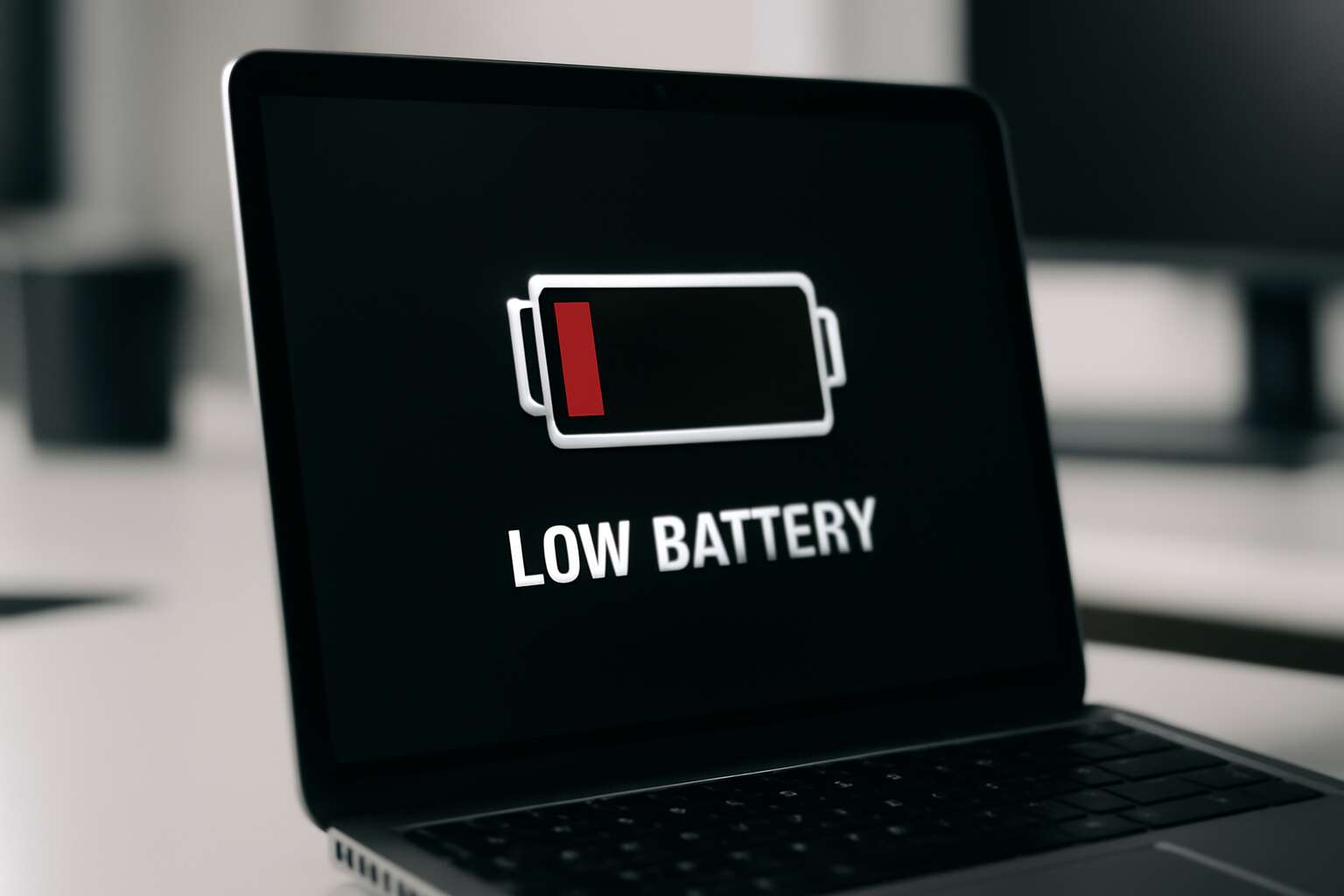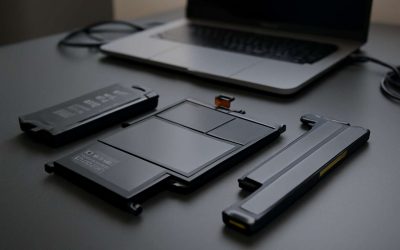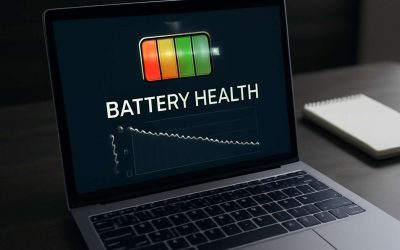Understanding Laptop Battery Failure
Common Causes of Laptop Battery Dying – Exploring reasons why laptop batteries fail prematurely
A malfunctioning laptop battery can feel like a betrayal by technology itself—suddenly, the device that once powered dreams and ambitions becomes silent and still. Often, the culprit behind a laptop battery is dead is not just bad luck but a combination of underlying issues that silently chip away at its lifespan.
One common cause of a laptop battery dying prematurely is prolonged exposure to high temperatures. Excessive heat accelerates chemical reactions within the battery, hastening its decline. Additionally, frequent full discharges and constant recharges strain the battery’s capacity, leading to diminished performance over time.
Understanding these common causes of laptop battery failure can help prevent it from happening in the first place. For instance, avoiding extreme temperatures and practicing proper charging habits can extend the life of your battery. Remember, the resilience of your device hinges on the care you provide—sometimes, a simple change in routine can prevent your laptop battery from being dead when you need it most.
Signs Your Laptop Battery is Failing – Indicators indicating a dying or dead battery
When your laptop suddenly shuts down or refuses to hold a charge, it’s a stark reminder that the laptop battery is dead. Recognizing the signs early can save you from unexpected disruptions—especially during crucial moments. One of the clearest indicators is a rapid drop in battery percentage, even when the device hasn’t been heavily used. If your laptop’s performance seems inconsistent and it struggles to reach full charge, it’s a telltale sign that the battery’s capacity is waning.
Another subtle yet telling sign is the device’s failure to turn on without being plugged in, despite showing some charge. Over time, the battery’s ability to store power diminishes, leading to the dreaded “laptop battery is dead” scenario. Keep an eye out for irregular battery behavior, such as overheating or swelling, which can also hint at imminent failure. Detecting these signs early can make all the difference in prolonging your device’s vitality and ensuring seamless productivity.
How Laptop Batteries Work – Overview of lithium-ion battery technology and lifespan
Understanding why your laptop battery is dead begins with knowing how modern batteries work. Most laptops today rely on lithium-ion technology, which has revolutionized portable power. These batteries are marvels of engineering, designed to store and release energy efficiently over hundreds of charge cycles. But beneath their sleek exterior lies a delicate chemistry that gradually wears down with use.
Over time, the capacity of a lithium-ion battery diminishes, meaning it can’t hold a full charge anymore. This process is natural, yet many users are caught off guard when their device suddenly refuses to power up without being plugged in. The lifespan of a typical laptop battery is around 2 to 3 years, but frequent charging and discharging can accelerate wear and tear. Recognizing these signs early can help prevent the frustrating experience of a laptop battery being dead when you need it most.
To better understand this phenomenon, consider that each charge cycle slightly depletes the battery’s ability to store energy. As it ages, irregular behavior such as overheating or swelling can occur, further signaling impending failure. Knowing how laptop batteries work not only demystifies why your device’s power diminishes but also emphasizes the importance of caring for this vital component to extend its life.
Troubleshooting a Dead Laptop Battery
Checking Battery Health – Tools and steps to assess battery condition
In the shadowed corridors of technology, a dead laptop battery can feel like a spectral curse—silent yet suffocating. When your device refuses to breathe life despite being plugged in, it’s time to investigate deeper. One of the first steps is to check the battery’s health. This isn’t merely a ritual; it’s a vital ritual that reveals whether the battery’s spirit has been broken or if it merely needs a potion of recalibration.
Tools like built-in diagnostics or third-party applications can serve as your arcane instruments, exposing the hidden decay within. For Windows, the Battery Report feature conjures a detailed report of the battery’s condition, revealing its capacity and cycle count—clues to its impending demise. For Mac users, the system information utility offers similar insights.
To assess the dark vitality of your battery, follow these steps:
- Access the battery report via command prompt or system information.
- Analyze the maximum capacity compared to the original specification.
- Note the cycle count—if it exceeds the manufacturer’s recommended threshold, the battery may be beyond salvation.
Understanding these signals can uncover whether the laptop battery is dead or merely resting in a coma, waiting for revival.
Resetting or Recalibrating Your Laptop Battery – Guidelines for recalibrating to improve performance
When your laptop battery is dead, it can feel like the device has fallen into a deep slumber from which it refuses to awaken. But sometimes, a little ritual—like resetting or recalibrating—can breathe new life into a seemingly lifeless battery. This process is akin to awakening a dormant spirit within your device, restoring its ability to gauge its own vitality.
Recalibrating your laptop battery is a gentle art, involving a careful dance of charge cycles and resting periods. Begin by charging your laptop to 100%, then let it drain completely until it powers off naturally. This helps the battery’s internal sensors recalibrate, providing a more accurate reflection of its true capacity. For optimal results, repeat this process a few times, especially if your laptop battery is dead or showing inconsistent readings.
Some users find success in performing a simple reset—removing the battery (if possible), pressing and holding the power button for 30 seconds, then reinserting the battery and powering up. This act clears minor glitches and resets the power management system, giving your device a fresh start. If your laptop battery is dead, these recalibration and reset steps might just be the key to revival before considering a replacement. After all, sometimes the spirits of technology just need a gentle nudge back into vitality!
Verifying Power Adapter and Charging Components – Ensuring the charger and port are functional
When a laptop battery is dead, it’s more than just an inconvenience—it’s a mystery waiting to be unraveled. Before jumping to costly replacements, it’s crucial to verify the power adapter and charging components. Often overlooked, these elements can be the silent culprits behind a dead battery.
Start by inspecting the power adapter for visible damage and ensuring the cable isn’t frayed or broken. Next, check the port where the charger plugs into your laptop. Dust, debris, or loose connections here can impede charging.
A simple but effective step is to test the charger with a multimeter or try a different compatible charger if available. Sometimes, a faulty power adapter can cause your laptop battery to remain lifeless, even when plugged in.
For a more detailed diagnosis, consider examining the laptop’s charging port for signs of wear or corrosion—these can prevent proper power transfer. When all else fails, understanding that the power supply might be the weak link helps clarify the reason why your laptop battery is dead, guiding you towards the right fix.
How to Fix a Dead Laptop Battery
Simple Fixes to Try First – Resetting power options, updating BIOS, etc.
A dead laptop battery can feel like a technological betrayal, especially when you’re in the middle of an important task. Before rushing to replace it, try some simple fixes that might revive your device’s power. Resetting the power options can often resolve minor glitches that cause the laptop battery is dead indicator to appear. Updating the BIOS is another step that ensures your hardware communicates correctly with the operating system, potentially restoring battery function.
Sometimes, recalibrating your battery by fully charging it, then draining it completely, helps recalibrate the system’s power management. Additionally, verify that your power adapter and charging port are functioning properly—faulty chargers or loose ports can mimic a dead battery issue.
If your laptop battery is dead despite these efforts, it might be time to consider a replacement. But often, these straightforward steps can breathe new life into a seemingly useless battery.
Replacing the Battery – When and how to replace your laptop battery
When the dreaded message “laptop battery is dead” flickers on the screen, it can feel like a thunderclap in a quiet room. But before despair sets in, it’s crucial to understand when a simple replacement is necessary and when your device might just need a gentle nudge back to life. Replacing the laptop battery is often the final chapter in a saga of wear and tear, especially when the battery’s lifespan has run its course.
To begin, ensure the device is disconnected from the power source, then carefully remove the back panel—many modern laptops have accessible batteries that can be swapped out without professional help. If your laptop is out of warranty and the battery no longer holds a charge, a replacement could be your salvation.
- Identify the model number of your device.
- Purchase an authentic, compatible replacement battery.
- Follow manufacturer instructions for safe removal and installation.
Replacing a laptop battery isn’t just about swapping parts; it’s about restoring the vitality of your device. When the old battery’s glow fades, a fresh one can breathe new life into your trusted companion, ending those disheartening “laptop battery is dead” alerts once and for all.
Professional Repair Options – Seeking expert help for stubborn issues
When a stubborn laptop battery is dead, it’s tempting to reach for a screwdriver or a new device. But sometimes, the issue runs deeper than a simple replacement. Professional repair options can uncover hidden problems that DIY solutions might overlook. Expert technicians have the tools to diagnose whether the battery is truly dead or if the issue stems from faulty charging circuits, damaged power connectors, or corrupted BIOS settings.
Seeking professional help is particularly vital when your laptop battery is dead despite multiple attempts to recharge. Certified repair centers can perform thorough testing, using specialized tools to assess battery health and identify underlying faults. They can also recalibrate the battery or replace internal components that may be causing power failure.
In some cases, advanced repair options involve firmware updates or hardware reconditioning—procedures that only seasoned technicians can perform safely. If the “laptop battery is dead” message persists despite basic troubleshooting, turning to professional repair services might be the best route to restore your device’s vitality and avoid costly replacements. Remember, a trained eye can often breathe new life into a seemingly dead battery—saving you time, money, and frustration.
Preventing Future Laptop Battery Issues
Best Practices for Battery Maintenance – Charging habits and usage tips
A dying laptop battery isn’t just an inconvenience; it’s a silent warning from your device, whispering that your habits could be accelerating its demise. But fear not—there are strategic ways to prevent future laptop battery issues and extend its lifespan. Proper charging habits are paramount. Avoid letting your battery drain completely before recharging, as lithium-ion technology prefers partial, frequent charges. Conversely, keeping the battery consistently above 20% can help maintain its health. Usage tips also include not exposing your laptop to extreme temperatures—heat is a silent killer for your battery.
Incorporating simple practices can make a significant difference. For instance, turning off your device when not in use or enabling battery saver modes can reduce stress on the battery. If your laptop is often plugged in, consider removing the charger once it reaches 80% to prevent overcharging, which can degrade the cells over time. Remember, a well-maintained battery isn’t just about avoiding the dreaded “laptop battery is dead” moments but ensuring your device remains reliable and efficient for years to come. Staying vigilant with these best practices keeps your laptop’s power core alive and thriving.
Maximizing Battery Lifespan – Settings and adjustments to extend battery health
When your laptop battery is dead, it feels like losing a vital part of your digital life. But beyond the frustration, there’s a chance to turn back the clock on your battery’s health. Maximizing battery lifespan isn’t just about avoiding sudden shutdowns; it’s about understanding the subtle art of setting your device to optimize longevity. Settings like battery saver modes and adaptive brightness are silent allies in this battle, reducing unnecessary power drain.
Adjusting power management features and fine-tuning your laptop for efficiency can dramatically extend its battery’s vitality. For example, disabling background apps and reducing screen brightness can add precious hours to your device’s runtime. An effective strategy involves regularly monitoring your battery health through built-in diagnostics, ensuring that you catch early signs of degradation. Remember, a well-calibrated battery isn’t just about preventing the dreaded “laptop battery is dead” warning, but about keeping your device reliable for years to come.
Incorporating these adjustments may seem small, but they wield enormous power in safeguarding your battery’s future. Proper settings and mindful usage can delay the inevitable, giving your laptop the endurance it needs—and perhaps, just perhaps, keeping the ghost of a dead battery at bay for longer.
When to Consider Battery Replacement – Signs indicating it’s time for a new battery
When your laptop battery is dead more frequently, it’s a clear sign that your device might be approaching the end of its lifespan. Recognizing the signs early can save you from unexpected shutdowns and data loss. If your battery life has sharply declined despite proper maintenance, or if it no longer holds a charge beyond a few minutes, it’s time to consider a replacement.
In South Africa, where power stability can be unpredictable, relying on a healthy battery is crucial. An aging battery often exhibits rapid discharges, swollen casing, or difficulty charging even when connected to a reliable power source.
- Significant reduction in runtime
- Inconsistent charge levels
- Physical battery swelling or overheating
These are all red flags indicating that it’s time for a new battery.
When these warning signs become persistent, replacing the battery is often the most practical solution. Ignoring the symptoms can lead to further internal damage or even data corruption. For many, a professional battery replacement ensures longevity, restoring your laptop’s reliability and performance. Remember, a laptop battery is dead when it no longer serves its purpose—timely intervention can be the difference between a seamless workflow and constant frustration.
Additional Tips for Laptop Battery Optimization
Using Power Management Settings – Configuring your device for optimal battery life
Ever wondered why your laptop battery is dead just when you need it most? A little-known secret is that tweaking your power management settings can dramatically extend your battery life. Think of these settings as your laptop’s personal trainer—pushing it to perform at its best without burning out. Proper configuration not only conserves energy but also prevents that dreaded moment when your device suddenly powers down.
To optimize your battery performance, consider adjusting your device’s power plan. For example, setting your laptop to a “Power Saver” mode reduces background activity and dims the screen, which are major energy drainers. Additionally, managing display timeout and sleep mode timings can make a noticeable difference. Here’s a quick tip:
- Disable unnecessary startup programs that gobble up power even when you’re not using them
and
- Lower screen brightness to conserve energy—your eyes will thank you too!
Reducing Background Processes – Minimizing battery drain from apps and services
Reducing background processes is a silent yet powerful strategy to combat the dreaded moment when your laptop battery is dead. Many users overlook how much energy apps and services drain without even realizing it—each one quietly sipping power in the background. Disabling unnecessary applications not only frees up system resources but significantly prolongs your device’s operational time. Consider closing or disabling programs that aren’t actively needed, especially those that launch at startup and run invisibly in the background.
To streamline this process, you can prioritize your efforts with a simple list:
- Review your task manager to identify power-hungry apps.
- Disable or uninstall non-essential programs that auto-start.
- Adjust system settings to limit background activity for specific applications.
In addition, managing notifications and background sync can make a noticeable difference. When your laptop battery is dead, it’s often the cumulative effect of these small, unnoticed energy drains that push it over the edge. With mindful management of background processes, you’ll find your device running longer, ensuring you’re not caught unprepared when power outlets are scarce.
Keeping Your Laptop Cool – Temperature effects on battery health
Overheating isn’t just an unwelcome guest at your summer braai; it’s a stealthy assassin of your laptop battery’s longevity. When a laptop gets too warm, the chemical processes within the lithium-ion battery can accelerate, causing premature wear and reducing its lifespan. Keeping your device cool isn’t merely about comfort—it’s a vital strategy to prevent the dreaded moment when the laptop battery is dead.
To maintain optimal temperature, ensure proper ventilation and avoid placing your laptop on soft surfaces that trap heat. If your workspace tends to be scorchingly hot, consider investing in a cooling pad to act as a thermal buffer. Remember, a cooler environment can significantly extend your battery’s health, giving you more time between charges and staving off that dreaded dead battery scenario.
For those who prefer a more structured approach, here’s a quick tip:
- Regularly clean your device’s air vents.
This simple act prevents dust buildup, which can insulate heat and cause temperature spikes. When your laptop stays within a safe thermal range, the chemical reactions inside the battery remain stable, helping to preserve its capacity and ultimately, its lifespan.




0 Comments